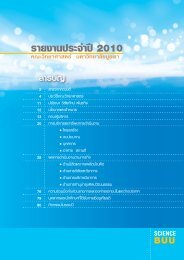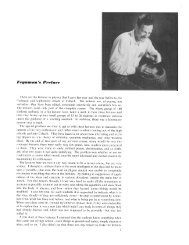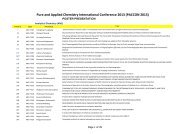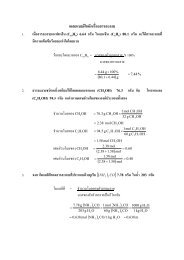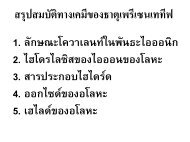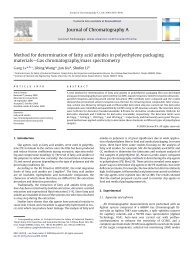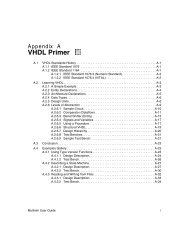USER MANUAL SWAN Cycle III version 40.72A
USER MANUAL SWAN Cycle III version 40.72A
USER MANUAL SWAN Cycle III version 40.72A
Create successful ePaper yourself
Turn your PDF publications into a flip-book with our unique Google optimized e-Paper software.
10 Chapter 2<br />
the BOUNDSPEC command.<br />
Similarly, the wind fields may be available in different time windows than the current and<br />
water level fields and the computations may need to be carried out at other times than<br />
these input fields. For these reasons <strong>SWAN</strong> operates with different time windows with<br />
different time steps (each may have a different start and end time and time step):<br />
• one computational time window in which <strong>SWAN</strong> performs the computations,<br />
• one (or more) input time window(s) in which the bottom, current field, water level,<br />
bottom friction and wind field (if present) are given by the user (each input window<br />
may differ form the others) and<br />
• one (or more) output time window(s) in which the user requires output of <strong>SWAN</strong>.<br />
In case of nesting, <strong>SWAN</strong> searches the boundary conditions in the relevant output file of<br />
the previous <strong>SWAN</strong>, WAM or WAVEWATCH <strong>III</strong> runs to take the boundary conditions<br />
at the start time of the nested run. It will not take the initial condition (i.e. over the<br />
entire computational grid) for the nested run from the previous <strong>SWAN</strong>, WAM or WAVE-<br />
WATCH <strong>III</strong> run.<br />
During the computation <strong>SWAN</strong> obtains bottom, current, water level, wind and bottom<br />
friction information by tri-linear interpolation from the given input grid(s) and time<br />
window(s). The output is in turn obtained in <strong>SWAN</strong> by bi-linear interpolation in space<br />
from the computational grid; there is no interpolation in time, the output time is shifted<br />
to the nearest computational time level. Interpolation errors can be reduced by taking the<br />
grids and windows as much as equal to one another as possible (preferably identical). It<br />
is recommended to choose output times such that they coincide with computational time<br />
levels.<br />
2.6.2 Input grid(s) and time window(s)<br />
The bathymetry, current, water level, bottom friction and wind (if spatially variable) need<br />
to be provided to <strong>SWAN</strong> on so-called input grids. It is best to make an input grid so large<br />
that it completely covers the computational grid.<br />
In the region outside the input grid <strong>SWAN</strong> assumes that the bottom level, the water level<br />
and bottom friction are identical to those at the nearest boundary of the input grid (lateral<br />
shift of that boundary). In the regions not covered by this lateral shift (i.e. in the outside<br />
quadrants of the corners of the input grid), a constant field equal to the value at the nearest<br />
corner point of the input grid is taken. For the current and wind velocity, <strong>SWAN</strong> takes 0<br />
m/s for points outside the input grid.<br />
In <strong>SWAN</strong>, the bathymetry, current, water level, wind and bottom friction may be time<br />
varying. In that case they need to be provided to <strong>SWAN</strong> in so-called input time windows





